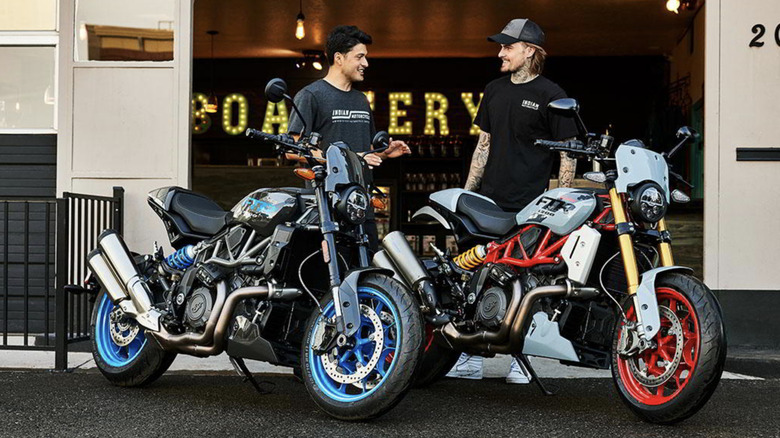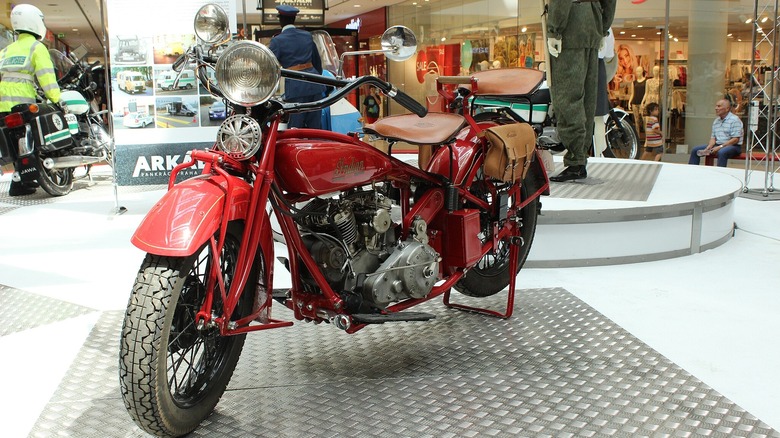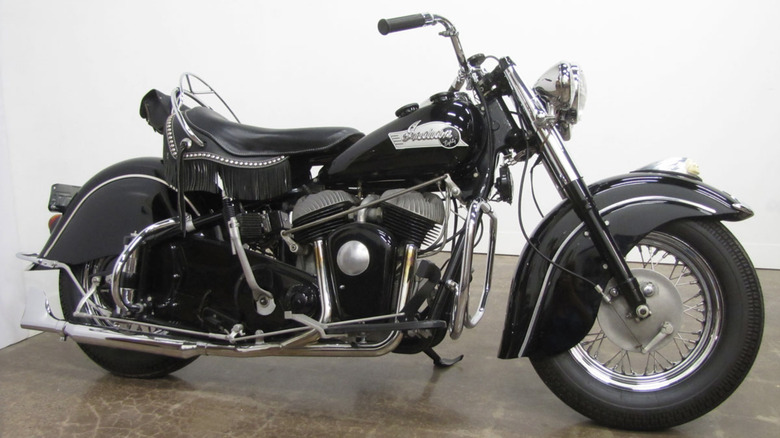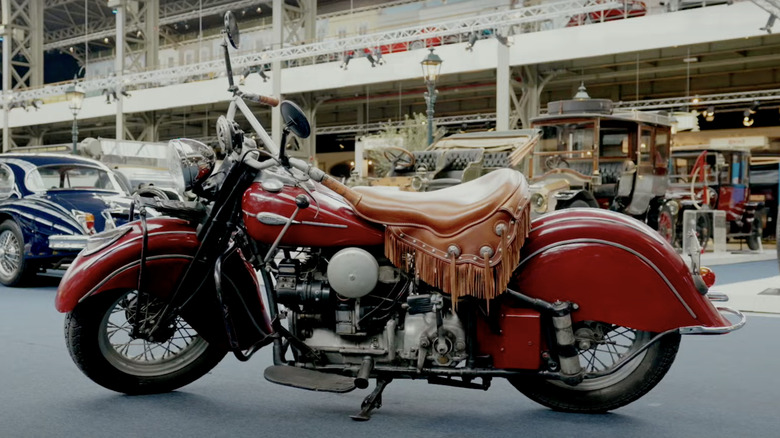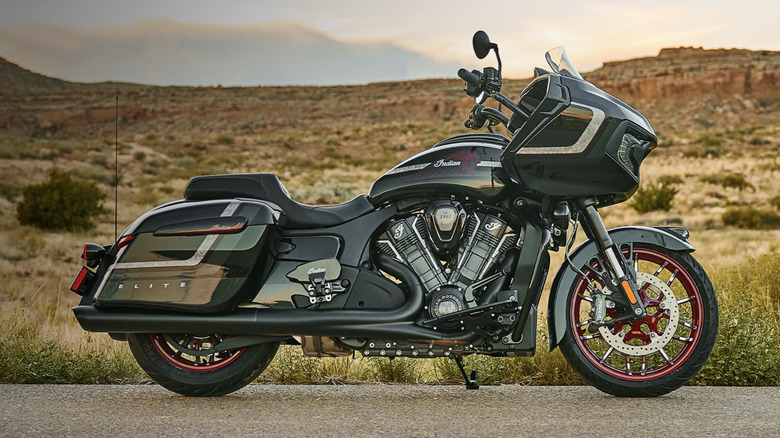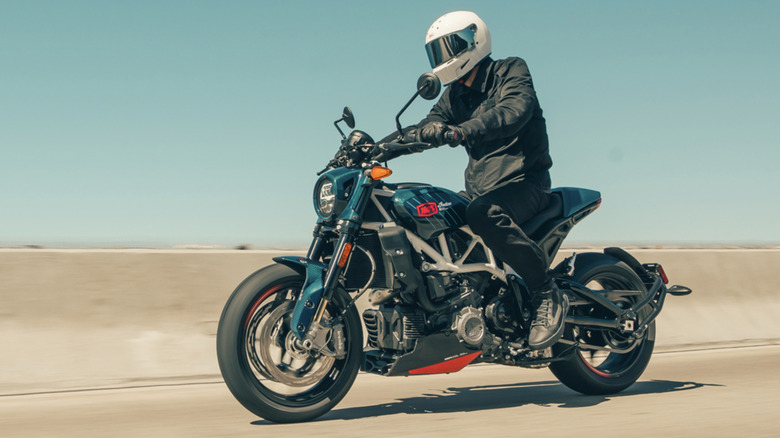5 Of The Fastest Motorcycles Indian Ever Built
With a rich history that dates back to 1901, Indian Motorcycle has etched its name into the hearts of motorcycle enthusiasts all over the world. Over the years, the brand, which was founded by George M. Hendee and Oscar Hedstrom, saw several significant changes. While it was once the most popular motorcycle brand in America, Indian Motorcycle faced its most challenging year in 1953 and had to shut down operations completely.
However, the brand didn't fade into obscurity. After several attempts to revive the legacy of Indian Motorcycle, it finally found its footing in 2011 after it was sold to Polaris Industries (a company that is renowned for its production of snowmobiles). Today, over a hundred years after it first made its way into the market, Indian has successfully relaunched some of its most popular legacy models, from the Scout to the Chief. The motorcycles, which are the perfect blend of classic styling, raw power, and modern innovation, have attracted not only long-time enthusiasts but also a whole new generation of riders.
Since its inception, Indian has focused on performance-oriented motorcycles — many of which are fit for the racetrack. This resulted in the brand building some of the fastest motorcycles that give riders a feel of its legendary racing heritage with every throttle twist. With that said, here's our compilation of some of the fastest motorcycles Indian has built over the decades.
Indian Scout 101
First launched in the '20s, the Scout line, which was designed by Charles B. Franklin, quickly caught the attention of motorcycle enthusiasts at the time and became more popular than the larger Chief model. The Model 101, which was introduced in 1928 with a redesigned longer wheelbase and a lower seat height, was regarded at the time as the "best motorcycle that Indian has ever made." While many of Indian's motorcycles were fitted with a 74-cubic-inch V-twin, the Scout was designed with a 37-cubic-inch V-twin, which increased to 45 cubic inches by 1927. The motorcycle boasted excellent weight distribution and was renowned for its handling capabilities, but what really made it popular was that it could hit a top speed of 80 mph — a remarkable feat for the time.
Unfortunately, despite its stellar performance and rising popularity, Indian pulled the model in 1931, and it was replaced completely by the Chief, which some believe heralded the company's downfall. The likely reason for the Scout's decline was that it cost significantly more to produce compared to the Chief; this combined with the hard-hitting impact of the stock market crash of 1928 likely caused the production of the Scout 101 to become unsustainable.
However, despite being discontinued, the legacy of the Scout 101 was far from over. Decades later, the motorcycle was customized by Burt Munro, who set a land speed record of over 190 mph with it in 1967 — his feat was later celebrated in the movie "The World's Fastest Indian" in 2005. If you are a fan of this iconic motorcycle and can't get a hand on a vintage model, you should know that Indian has relaunched the Scout line, and the current 2024 model starts at $13,249.
Indian Chief
After the success of the Scout line, Indian was keen to showcase the relationship between the Chief and the Scout models. As a result, the Chief was designed with the same helical gear primary drive and integral gearbox as the Scout. This strategy worked for the company because the Chief soon became Indian's best-selling motorcycle. A noteworthy highlight of the Chief was its distinct styling with deeply skirted fenders, which gave it the classic V-twin cruiser look.
The Chief was a pretty formidable motorcycle that competed against the Harley-Davidsons of the time. Given that it could easily achieve a top speed of 90 mph despite its heavier chassis, the motorcycle was able to cruise effortlessly and quickly on the open road. When it was launched, the motorcycle displaced 61 cubic inches, but this increased to 74 by 1923. In 1950, the company further increased the displacement to 80 cubic inches, aiming to enhance the Chief's performance. Apart from the larger engine, Indian also added telescopic hydraulic forks, which further improved the motorcycle's handling and ride quality.
By 1953, which was the last year that the Chief was manufactured, the motorcycle saw certain design changes, and a tank insignia that read "Eighty" was added. That year, only 600 Chiefs were manufactured, which has made the 1953 Chief one of the most sought-after models by motorcycle collectors. However, while a vintage Chief might not exactly be affordable, there are plenty of surprisingly cheap classic Indian motorcycles out there.
Indian Four Model 441
The Indian Four was not initially developed by Indian Motorcycle. Rather, this motorcycle's origin goes back to the '20s Ace, which was developed by the Henderson brothers. Following Will Henderson's death, Ace's assets were put up for sale in 1927, and Indian won the bid. Over a period of time, Indian rebranded the motorcycle and made it its own. In 1941, the Model 441 was launched as a touring motorcycle to give riders a smoother and more comfortable riding experience. In a world dominated by motorcycles with V-twin engines, the Model 441's four-cylinder engine with a 1,297 cc displacement set it apart.
The motorcycle hit a top speed of 95 mph, which wasn't common for touring motorcycles at the time. It had a larger fuel tank that could accommodate 4.5 gallons of gas, allowing riders to travel long distances without refueling stops. Despite its popularity among motorcyclists of the time, the Indian Four Model 441 did not succeed in terms of long-term production. The onset of World War II caused Indian to refocus its priorities on developing and launching motorcycles for the military. This ceased the production of the Model 441. Today, the Model 441's distinct features, including its skirted fenders, rarity, and powerful engine, have made it a bit of a collector's item.
Indian Challenger Elite
Featuring distinct, bold styling with a whole host of modern amenities, the Indian Challenger Elite is "the highest-performance Indian Challenger to date," according to Indian. Keep in mind that the Challenger Elite is not an inexpensive ride, but there are only 325 of these exclusive motorcycles available globally, making it not just another bike but rather a collectible.
The Challenger Elite is powered by Indian's most powerful motorcycle engine, the PowerPlus 108 engine, which boasts a displacement of 108 cubic inches (1,769 cc), an output of 122 horsepower, and 128 ft-lbs of max torque. The powerhouse engine delivers an impressive max speed of around 125 mph, making the motorcycle impressive and agile on both highways and city streets.
As with any motorcycle in this league, you won't have to deal with a shortage of amenities. The rear suspension is electronically adjustable, which allows you to optimize the suspension setting to your liking. You also get an adjustable tinted flare-wide shelf, which you can raise or lower to suit the wind conditions at the time of riding. Additionally, the motorcycle features 6.5-inch speakers, which deliver 400 watts of crystal-clear audio. All of these creature comforts go a long way in making this fast and powerful motorcycle all the more enjoyable while on the open road.
Indian FTR1200 S
One of the newer Indian motorcycles that pays homage to the brand's racing heritage, the FTR1200 S is an undoubtedly fast machine. The power delivery is almost too quick, especially when you operate it in the riding modes, and the V-twin engines ensure you have all the speed and torque you need with this motorcycle. The FTR1200 S boasts a max power of 118 bhp, a max torque of 85 ft-lb, and a top speed of 130 mph, which is the highest for an Indian motorcycle to date. The motorcycle can go from 0 to 60 in 3.3 seconds and run the quarter-mile in a respectable 12.3 seconds at almost 120 mph.
Apart from the performance, the motorcycle also comes with a whole range of advanced features, like the Brembo brakes, an under-seat fuel tank, a fully adjustable Sachs suspension, and more. While the standard variant of the FTR1200 is expectedly less equipped, the S trim elevates your user and riding experience with its technological advancements.
The motorcycle doesn't give you a whole lot to complain about, but one of the letdowns is its tires. The Dunlop DT3-R tires are a good option, but they may not deliver the best performance under all riding conditions. If you want to maximize this motorcycle's performance and power, you're best off upgrading to a, perhaps, more aggressively crowned tire for enhanced stability and grip.
